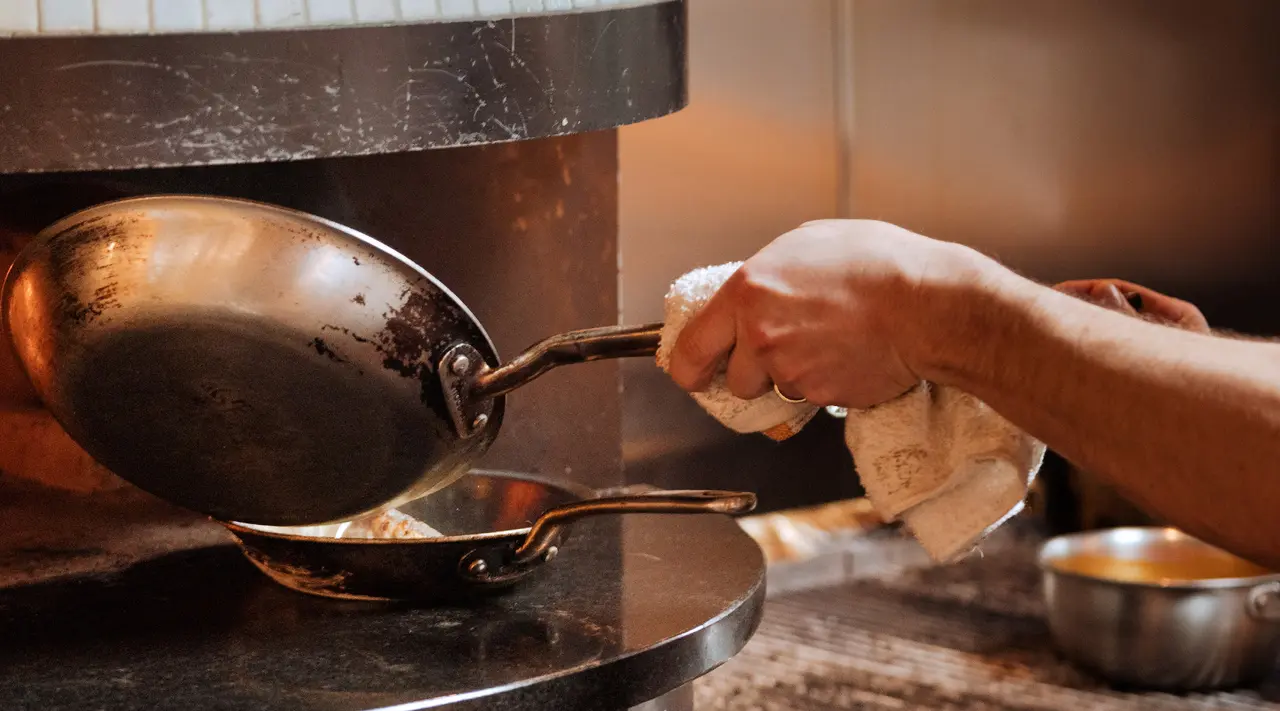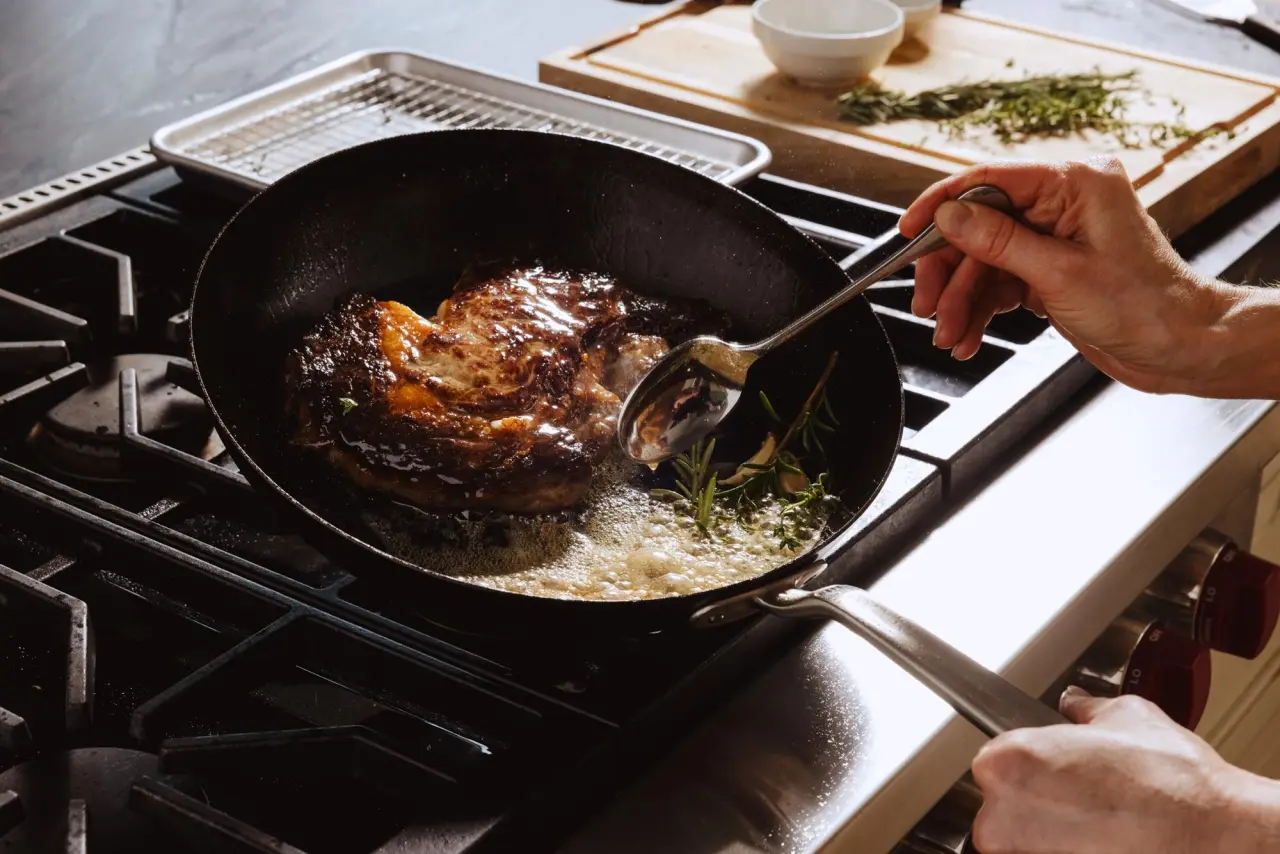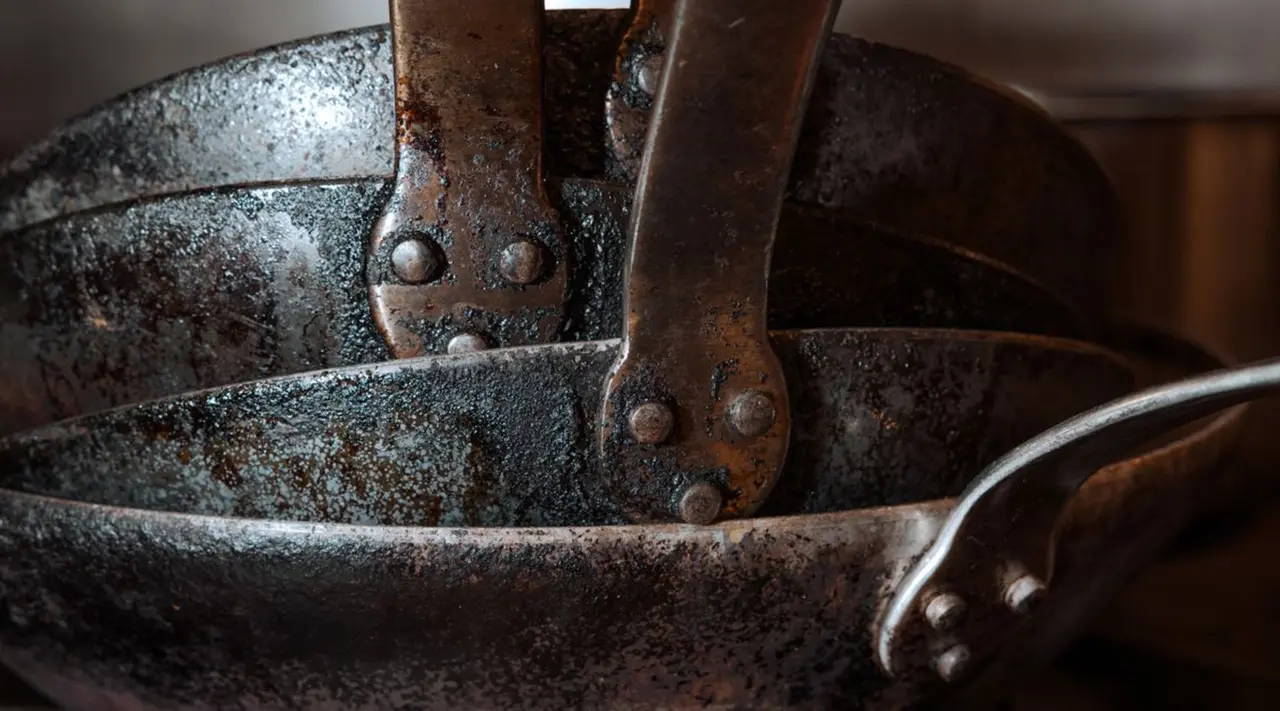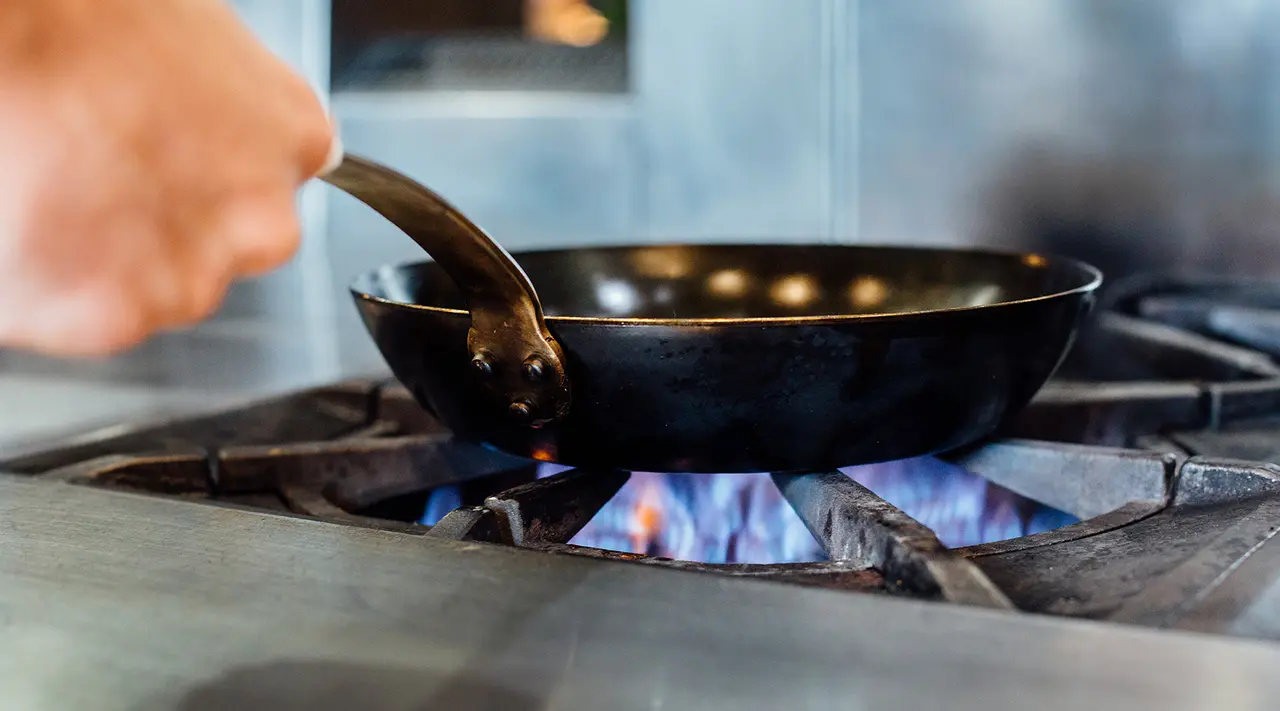We’re big proponents of cleaning—and otherwise maintaining—your cookware on a daily basis. Not only will your pots and pans perform better when they’re not covered in caked-on grime and burnt oil, but there’s also just something about a shelf full of gleaming cookware that helps boost our morale a little every time we look at it.
That said, flipping over our stainless steel saute pan to find a stained bottom doesn't make us feel as good. Let this serve as a reminder that you do, actually, have to clean the bottom of your pans, even if they don’t actually touch the food itself. Here’s why.
Why Should You Clean Pan Bottoms?
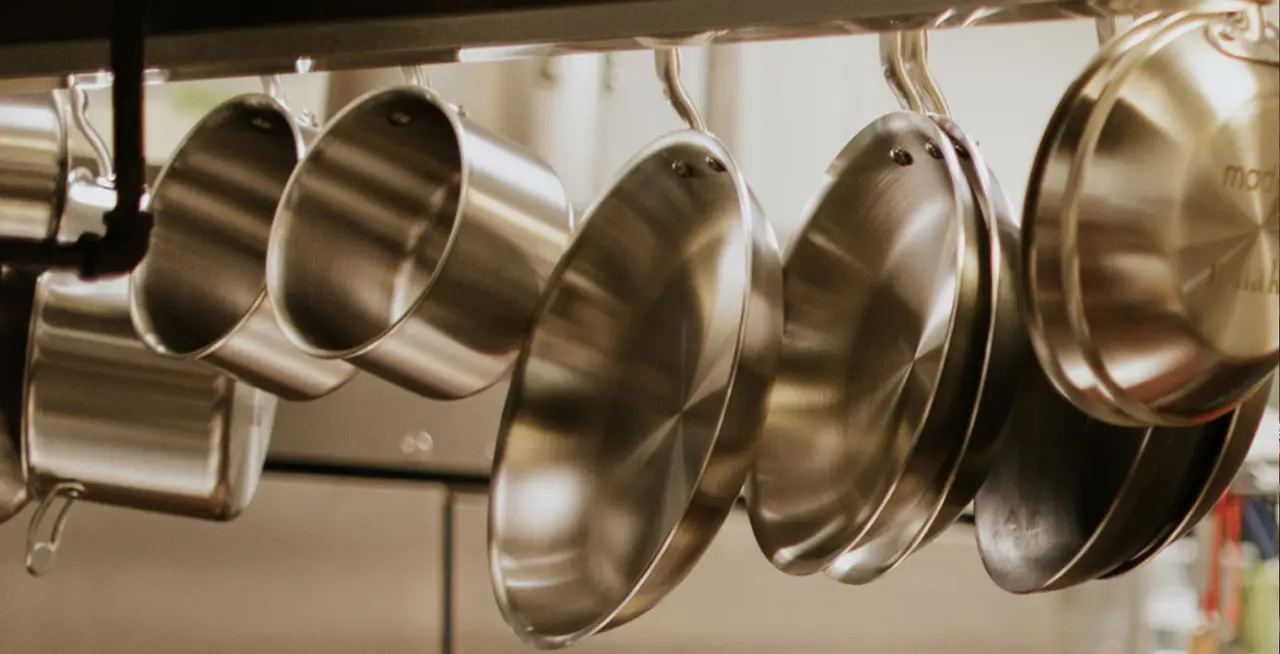
Odds are, bits of unnoticed sauce or oil will splash over the sides of your pan whenever you cook, and it’s just as easy to forget about them when you’re washing up afterward. Over time, this can build up into grimy, burnt-on layers that get harder to remove the longer they sit.
While a couple of stains might not make that big of a difference in your cookware’s performance, a pan bottom that looks like a fallout zone can start to become a bit hazardous—you certainly don’t want those crusted-on bits of food and oil to catch fire while you’re cooking, or to create a breeding ground for bacteria.
How Often Should You Clean the Bottom of Your Pan?
While power-washing your grimy pan bottoms every few months is certainly an option, it’s easier (not to mention less time consuming) to just prevent them from getting to that point in the first place.
How can you do this, you might ask? By giving your pan’s bottom a good scrub every time you wash it. This can keep stubborn stains and layers of polymerized oil from building up, making your job easier in the long run.
How to Clean Pan Bottoms
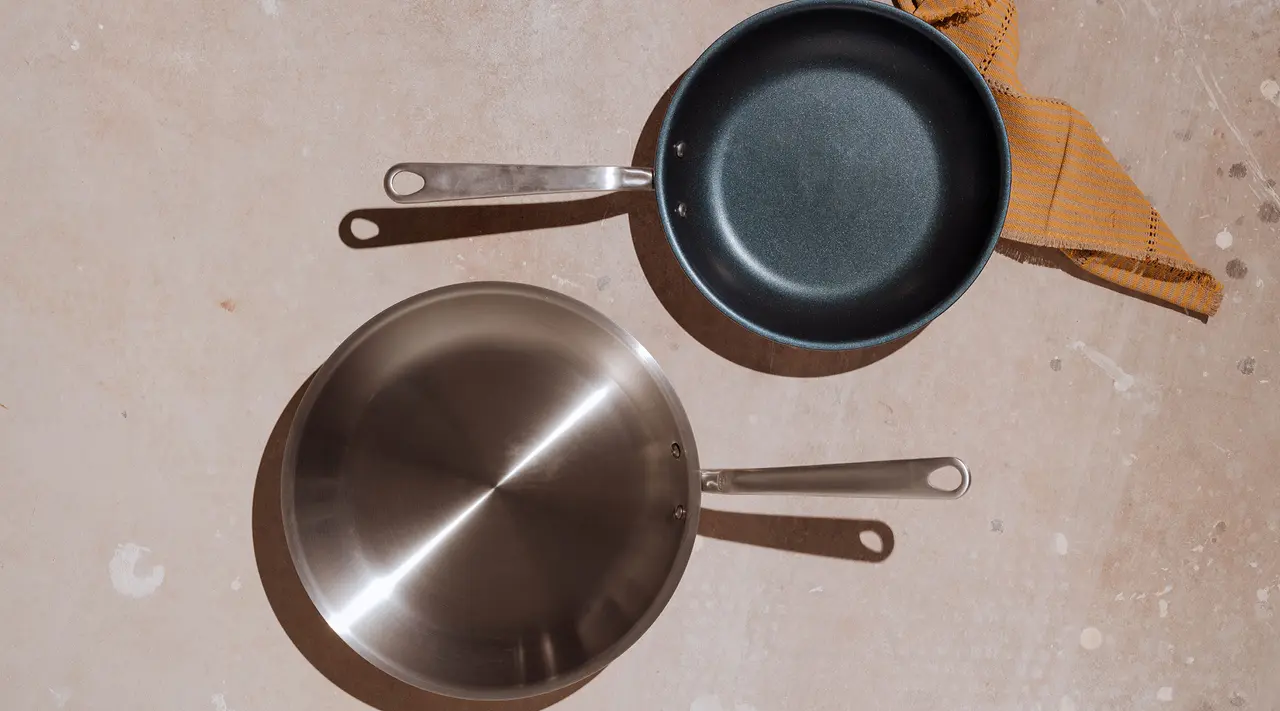
The material your pan is constructed from will inform how you clean the bottom of it. Here's how, based on the type of pan you're working with.
Non Stick
While cleaning a non stick frying pan is typically a breeze (especially using our trusty guide), cleaning the underside is a different story. Since non stick cookware is usually constructed using a base of metal, such as stainless steel, you’ll need to care for it slightly differently. Luckily, our non stick cookware is made with the same 5-ply Stainless Clad base as our other stainless steel cookware, so you can use the same cleaning instructions for your non stick pan’s bottom.
Just like with your Stainless Clad, you’ll also want to dry your non stick pan immediately after washing to avoid water spots, using a soft microfiber cloth or dish towel so that you don’t scratch the finish. Hang to dry, or stack using a cloth or trivet between each layer.
Stainless
Cleaning the base of your stainless steel pan should look exactly the same as cleaning the inside (and before you ask, yes—stainless steel can lose its flawless shine and grow discolored with use, though the discoloration is rarely permanent).
You’ll need a cleanser, like our Make It Like New stainless steel cleaner, and a non-abrasive sponge, which you’ll use to scour the bottom of the pan before rinsing. As with any stainless steel cookware, make sure your pan is thoroughly dry before storing—we recommend using a microfiber cloth to prevent smudges or water marks.
Enameled Cast Iron
Because most enameled cast iron cookware is glazed on both the inside and the outside, cleaning the bottom of your enameled cast iron Dutch oven or frying pan should be exactly the same as cleaning the inside. Depending on how serious a stain you’re working with, you can clean your pan bottom using ingredients as simple as baking soda or dish soap—though a special ceramic cleaner is ideal if you have it.
To help you figure out which method to use for your particular mess, check out our dedicated guide to cleaning enameled cast iron cookware.
Carbon Steel
We’ll keep it short: for daily cleaning, all you need to do for your carbon steel pan is give it a wipe with a dry dish cloth or towel. Nope, we didn’t skip any steps there.
The same goes for the bottom of your pan: using your dry cloth, wipe away any food residue or grease that may have spilled over the sides. If you’ve got a trickier mess on your hands, try methods two, three, or four in our guide to cleaning carbon steel.
Troubleshooting Common Issues
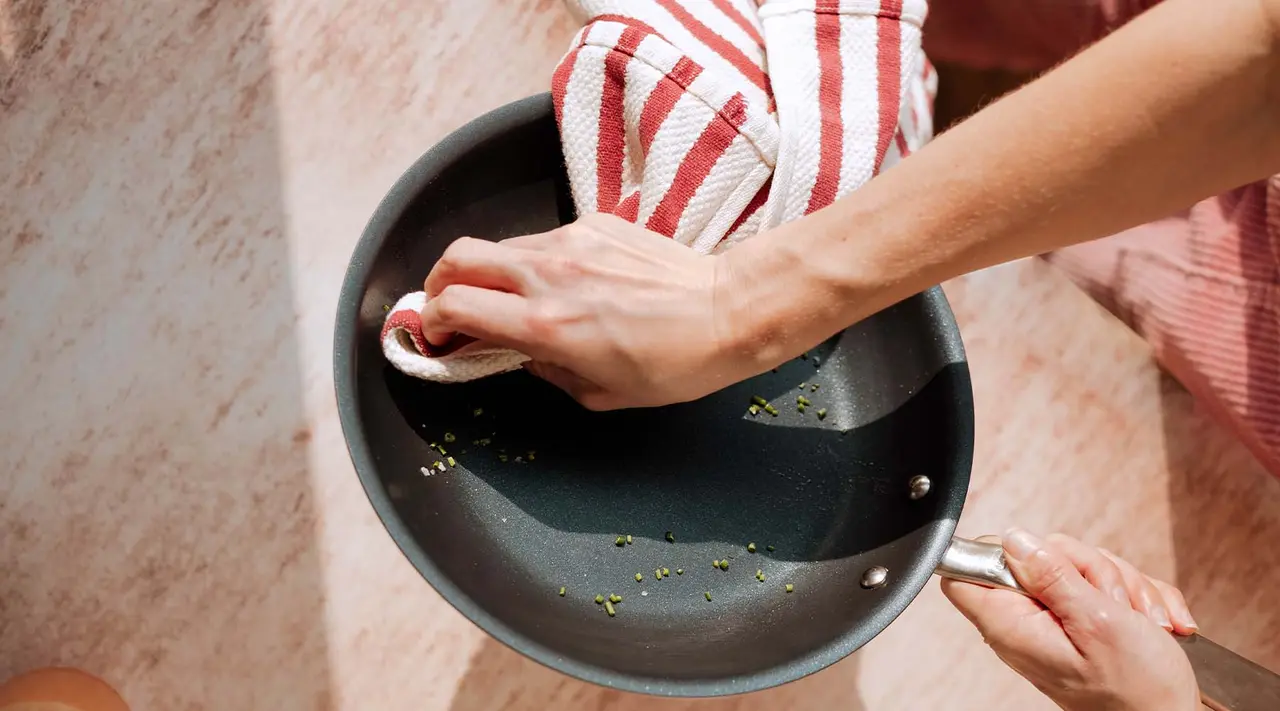
Persistent Stains or Residue
Over time, forgotten sauce, oil, or liquid remnants can build up into nasty, burnt-on layers that get harder to remove the longer they sit. For burnt stainless steel bottoms, try one or more of the methods listed here; we’ve also got tips for cleaning badly burnt or stained non-stick and carbon steel cookware.
With stainless steel pans, you may also notice a rainbow tint, aka heat tint, which occurs when stainless steel is overheated. This won’t affect your pan’s performance, but you can easily remove it if it bothers you.
Scratches and Physical Damage
If the bottom of your pan is looking a little scratched, don’t panic. While we recommend storing your pots and pans by hanging them or by stacking between trivets or dish towels to avoid this kind of surface damage, a well-loved pan is bound to get a little scratched up eventually.
Light scratches on your stainless steel or even on your non stick skillet aren’t generally a problem—even less so when they’re on the bottom of your pan, since it won’t come into contact with your food. And while you’ll probably want to replace your pan if the inside is severely scratched or chipped, you probably don’t need to if the damage is only on the bottom.
Carbon Steel Rusting
Carbon steel pans can get rusty if they haven’t been properly seasoned, or if the seasoning has been damaged, leaving the raw iron underneath exposed and vulnerable to oxidation. This is why we recommend seasoning both the bottom and sides of your carbon steel pan, rather than just the inside.
Make sure to always thoroughly dry your pan before putting it away, as well, and try to keep it away from moisture and humidity. If your pan does start to look a little rusty, of course we can help you out with that.
Ready to Cook?
It’s too easy to neglect the bottom of your pots and pans, especially when you know they’re not going to be touching your food. But, much like scheduling your yearly teeth cleaning or sending a thank you card, it feels good to have it out of the way. Plus, nothing impresses holiday guests like a beautifully kept kitchen—other than seeing your stacked cookware collection, of course.
